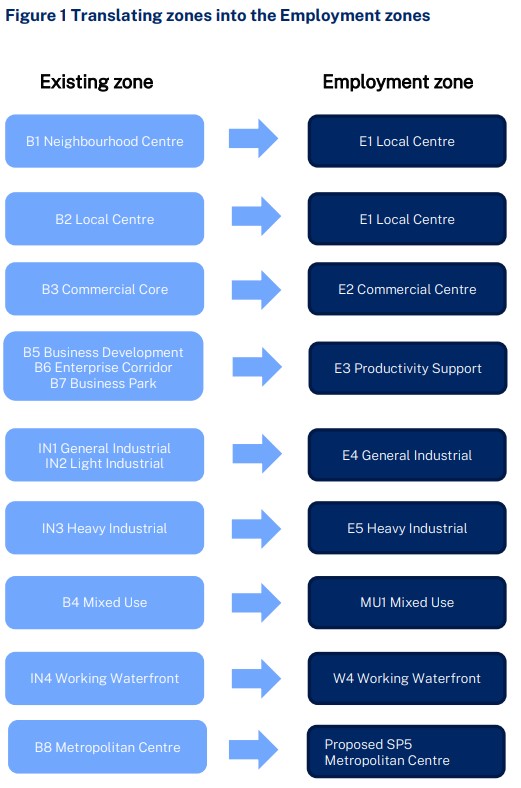On 26 April 2023, five new employment zones and four supporting zones were introduced into 135 local environment plans (LEPs) across NSW.
The new zones were formally introduced via an amendment to the Standard Instrument (Local Environmental Plans) Order 2006 (SI LEP Order) on 1 December 2021 to repeal the Business (B) or Industrial (IN) zones. These changes were made in response to the NSW Productivity Commission’s White Paper on Rebooting the Economy, which recommended consolidating employment zones.
The following new zones will replace the B and IN zones:
- Employment Zones in which the primary objective is to promote “employment-generating activities”, including:
- E1 – Local Centre;
- E2 – Commercial Core;
- E3 – Productivity Support;
- E4 – General Industrial;
- E5 – Heavy Industrial;
- Supporting Zones which intend to “accommodate land uses” in existing B or IN zones that are not primarily productivity related, including:
- MU1 – Mixed Use;
- W4 – Working Waterfront
- SP4 – Enterprise;
- SP5 – Metropolitan Centre.
According to the NSW Department Planning and Environment (DPE), these employment zones are developed to:
- maximise productivity while minimising land use conflicts and ensuring they are fit for purpose
- address current barriers within the planning system that limit the ability of businesses to establish, expand or adapt
- better support councils in the delivery of the strategic vision contained in their Local Strategic Planning Statements and background studies.
The DPE also released the following diagram in its report, Employment Zones Reform Implementation: Explanation of Intended Effect (May 2022), to provide guidance on translating the previous zones to the new zones:

Following the introduction of these new zones, each SI LEP will need to be amended to implement the new employment zones.
The SI LEP Order further provides some saving provisions, allowing development that was permitted with development consent under a former B or IN zone to continue to be permitted for 2 more years until 26 April 2025.

